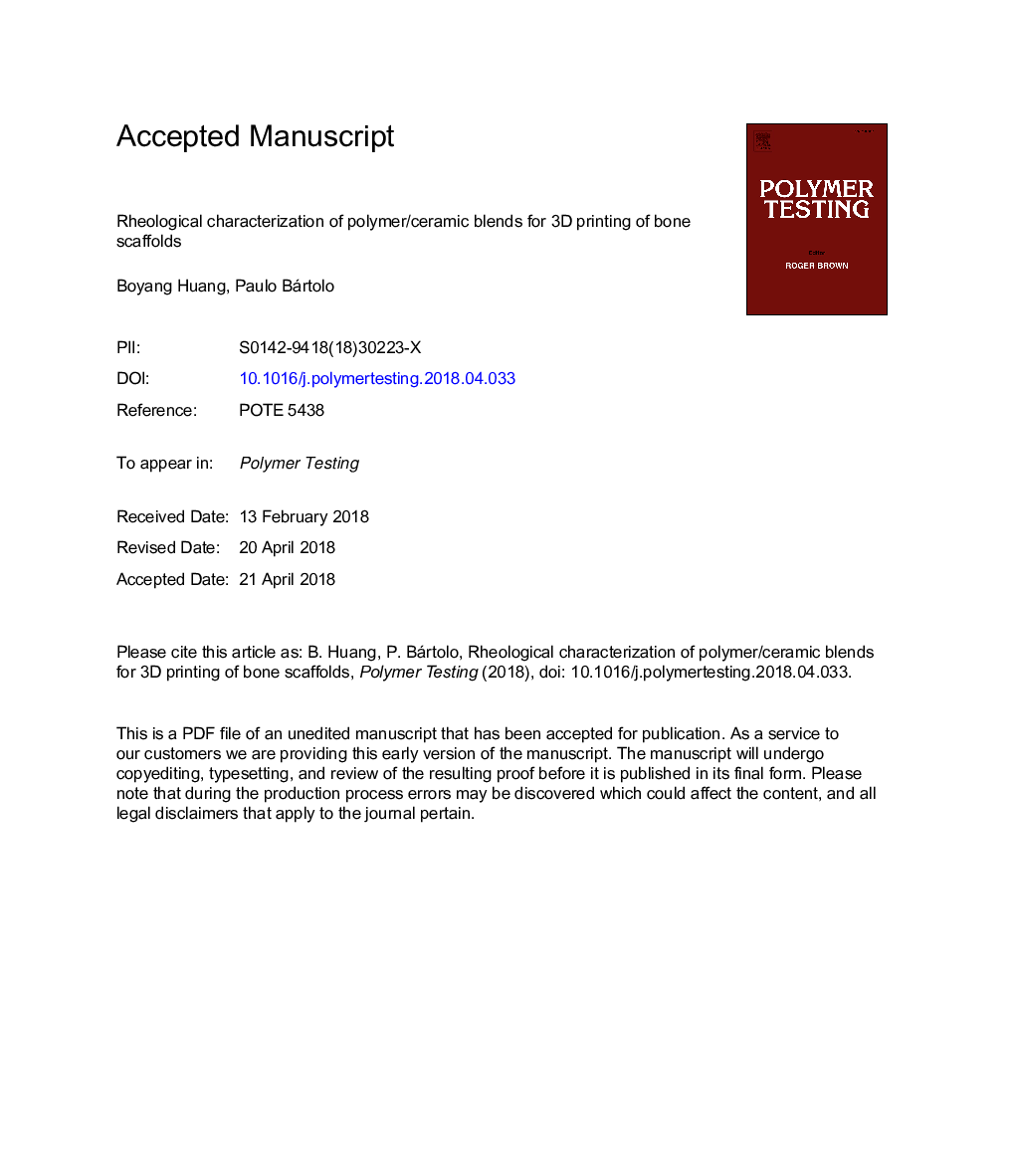| Article ID | Journal | Published Year | Pages | File Type |
|---|---|---|---|---|
| 7825025 | Polymer Testing | 2018 | 41 Pages |
Abstract
The fabrication of optimized scaffolds for bone regeneration requires complex physical and biological requirements, which strongly depend on the processing conditions and the material morphological development during the fabrication process. This paper presents an extensive rheological characterization of polymer/ceramic blends commonly used for the fabrication of bone scaffolds through additive manufacturing. Poly-ε-caprolactone (PCL)/hydroxyapatite (HA) and PCL/tri-calcium phosphate (TCP) blends with different ceramic contents (5, 10 and 20â¯wt %) were prepared using melt blending and studied using rotational and oscillation rheological tests. Results show that all samples present a shear-thinning behavior making them suitable for additive manufacturing. All samples present a viscoelastic behaviour with significantly high viscous modulus than elastic modulus at low frequencies. Both modulus increases with the addition of ceramic particles. Results also show that PCL/HA samples present high elastic modulus than PCL/TCP.
Related Topics
Physical Sciences and Engineering
Chemistry
Organic Chemistry
Authors
Boyang Huang, Paulo Jorge Bártolo,
